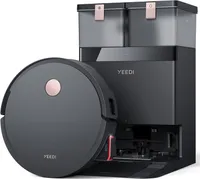The 6 Best Robot Vacuums After 1,000+ Hours of Rigorous Testing in Real Homes
This is the ultimate guide to choosing the best robot vacuum for your home and budget
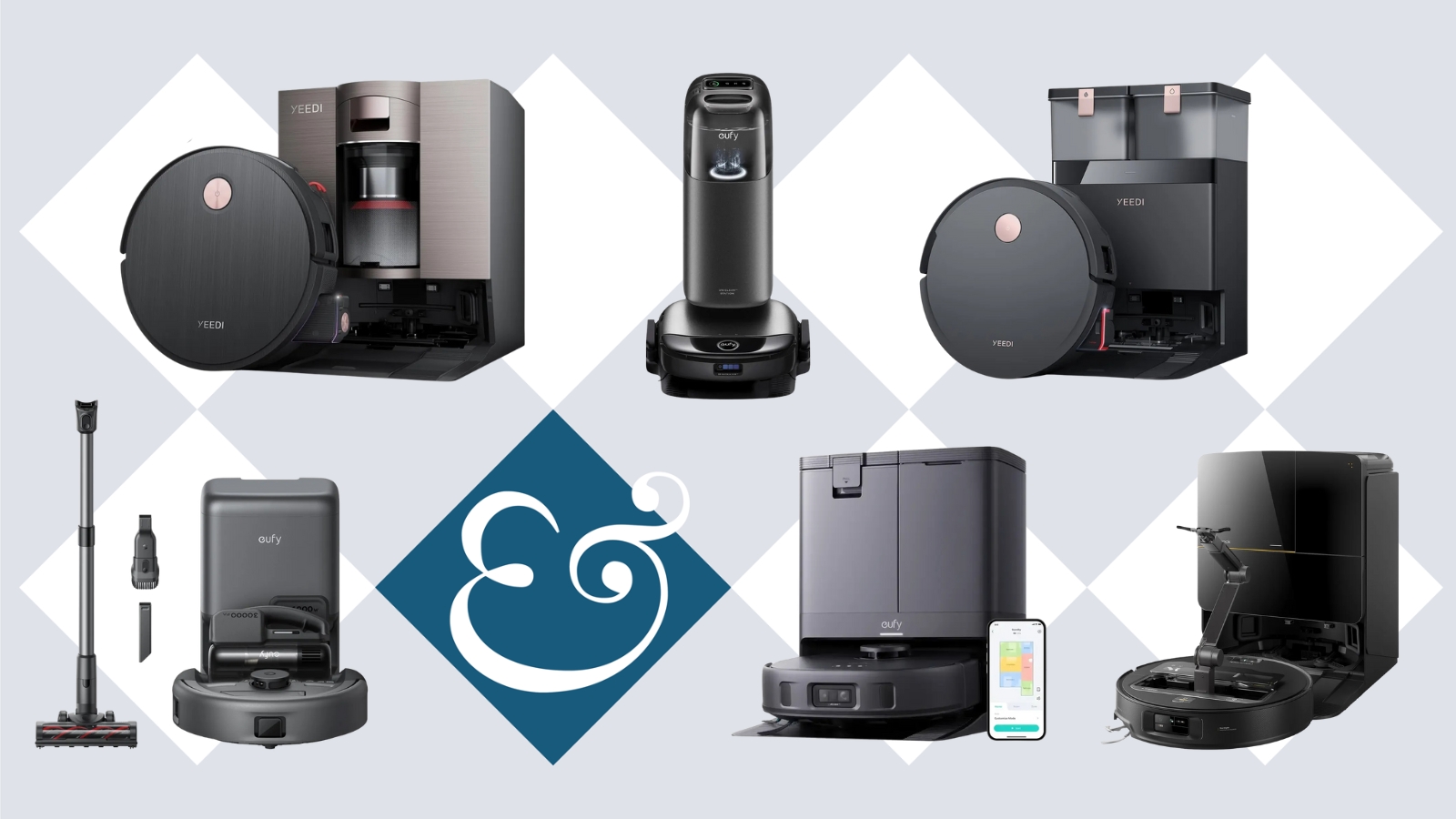

18 November 2025: The Yeedi S20 Infinity is the new best robot vacuum, the Yeedi S14 Plus is now the best value, and the eufy Omni S1 Pro is now the best for pet hair. I've also updated the price bands info and the comparison table in the one-minute summary, and included three early Black Friday deals on our top robot vacuums below the intro.
6 October 2025: The Yeedi S14 Plus is the new best robot vacuum, the eufy Omni S1 Pro has been demoted to best runner-up, and the Roborock Saros Z70 is the new best premium robot. The Amazon deals are still live to save $100s on our favorite models.
14 August 2025: Added a new section on buying considerations, a comparison table of our top picks, additional FAQs, and further information and videos from our rigorous testing.
If you loathe spending hours cleaning your floors every week, the best robot vacuum will instantly slash that commitment. These can take care of the nitty-gritty for you, freeing up hours in your schedule weekly and leaving your home spotless beneath your feet.
These futuristic devices vacuum, mop, and clean themselves all at once, and as the market-leading technology is more advanced than ever, robots can boast strong suction and deep cleaning that were once only found in full-sized vacuums.
But the best are often expensive, so to find out which ones are worth your money, we've tested 87 of the world's best vacuums, including 24 leading robot vacuums.
Here, you'll find our top six tested robots, a comprehensive guide on buying considerations, as well as top picks at every price band, to give you everything you need to choose the best robot vacuum for your home.
Yeedi S14 Plus | was $1,399.99, now $549.99 at Amazon (save $850)
<p>In our guide below, we praise the robot's incredibly high suction and easy navigation, and with this whopping $850 discount, you won't find anything better at this price.eufy Omni S1 Pro | was $1,499.99, now $799.99 at Amazon (save $700)
<p>Currently our best robot vacuum for pet hair, the eufy Omni S1 Pro does such a stellar job vacuuming and mopping that it reduced our tester's floorcare time by 90%.Dyson 360 Vis Nav | was $999.99, now $399.99 at Dyson (save $600)
<p>It may not have made our top six, but Dyson's robot vacuum still offers strong suction for daily clean floors, especially at this lowest-price-ever ahead of Black Friday.One-minute verdict
The Yeedi S14 Plus wins as the best robot vacuum we've tested. It performs brilliantly on every floor type, mops right to the corners, and vacuums pet hair without wrapping around the roller. It costs $1,399.99 at full price but is often discounted to around $699.99, making it much less expensive than similar, high-performing robots.
The eufy S1 Pro Omni is the second-best robot vacuum cleaner you can buy, effortlessly clearing all debris, spills, and stains, and with a special brushroll that never wraps with hair. It costs around $900-$1,500, depending on promotions.
For more of the full package, the eufy 3-in-1 E20 comes with a detachable handheld vacuum that can be turned into a full-sized cordless stick to clean up any messes that the robot leaves behind. At $300-$600, it's surprisingly affordable considering it's three vacuums in one.
If you're on a budget, the eufy X10 Pro Omni is the best value pick at $500-$800 (and it cleans almost as comprehensively as the eufy Omni S1 Pro), and the Shark PowerDetect 2-in-1 is the best mid-range with strong vacuuming and mopping performance, costing around $400-$1,000 depending on the model type and discounts.
And finally, if you're happy to invest in something premium, the Roborock Saros Z70 is the best, but most expensive robot. It boasts the highest suction of any robot we've tested (22,000Pa), and even has a mechanical arm that picks up small objects like tissues, socks, and shoes so you don't have to.
Here are our top six at a glance with a handy comparison table for the key features on offer. Or, keep scrolling to get to the full guide.
Robot vacuum | Suction power | Mop? | Self-empty station? | Navigation | Noise levels | Price |
Yeedi S20 Infinity | 19,500 Pa | Yes, mop roller | Yes | Advanced Embedded dToF LiDAR | Under 56 dB | $1,599.99 (often discounted to $999-$1,399) |
eufy S1 Pro Omni | 8,000 Pa | Yes, mop roller | Yes | Combination (LiDAR, RGB camera, infrared) | Under 60 dB | $1,499.99 (often discounted to $899-$1,300) |
Yeedi S14 Plus | 18,000 Pa | Yes, mop roller | Yes | Combination (LiDAR, RGB camera, 3D structured light) | Under 60 dB | $1,399.99 (often discounted to $549.99-$899.99) |
eufy X10 Pro Omni | 8,000 Pa | Yes, mop pads | Yes | Combination (LiDAR and RGB camera) | 61 dB | $799.99 (often discounted to $499.99-$699.99) |
eufy 3-in-1 E20 | 8,000 Pa (robot) / 30,000 Pa (cordless) | No | Yes | LiDAR | 65 to 75 dB | $649.99 (often discounted to $349.99) |
Roborock Saros Z70 | 22,000 Pa | Yes, mop pads | Yes | Combination (3D, ToF, LiDAR) | 50 to 60 dB | $2,599.99 (occasionally discounted to as low as $1,399.99) |
The Top Six

The best robot vacuum you can buy
With 19,500Pa suction and a powerful spinning mop roller, the Yeedi S20 Infinity is fully equipped to clean your floors for you, leaving them so spotless that our tester could comfortably walk around barefoot.
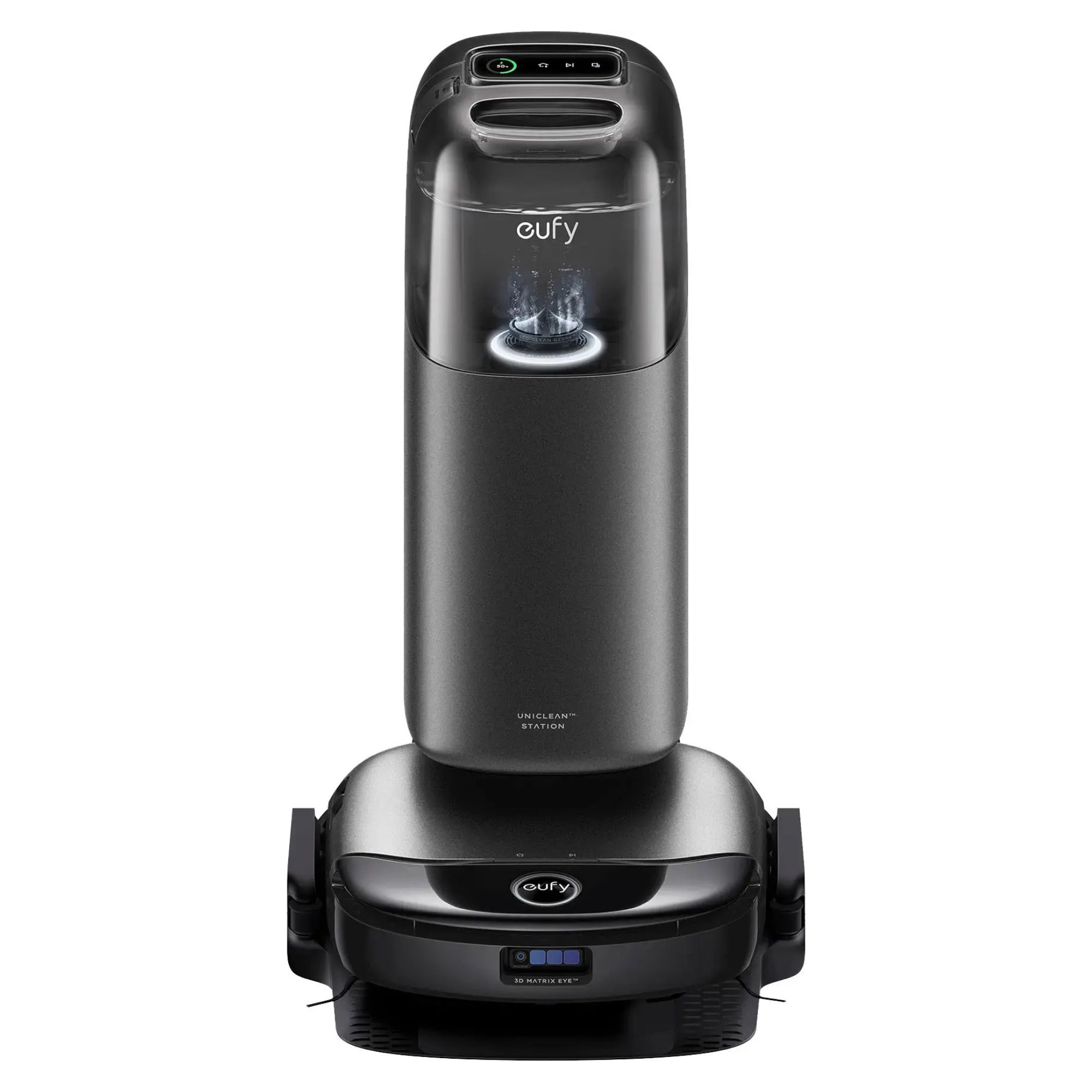
The best robot vacuum for pet hair
The eufy S1 Pro Omni is so great at pulling fur out of rugs and carpets that its cleaning is on par with a normal vacuum cleaner. That's almost unheard of in a robot vacuum, and it doesn't hurt that it works like a dream on dust, spills, and large debris on all surfaces, too.
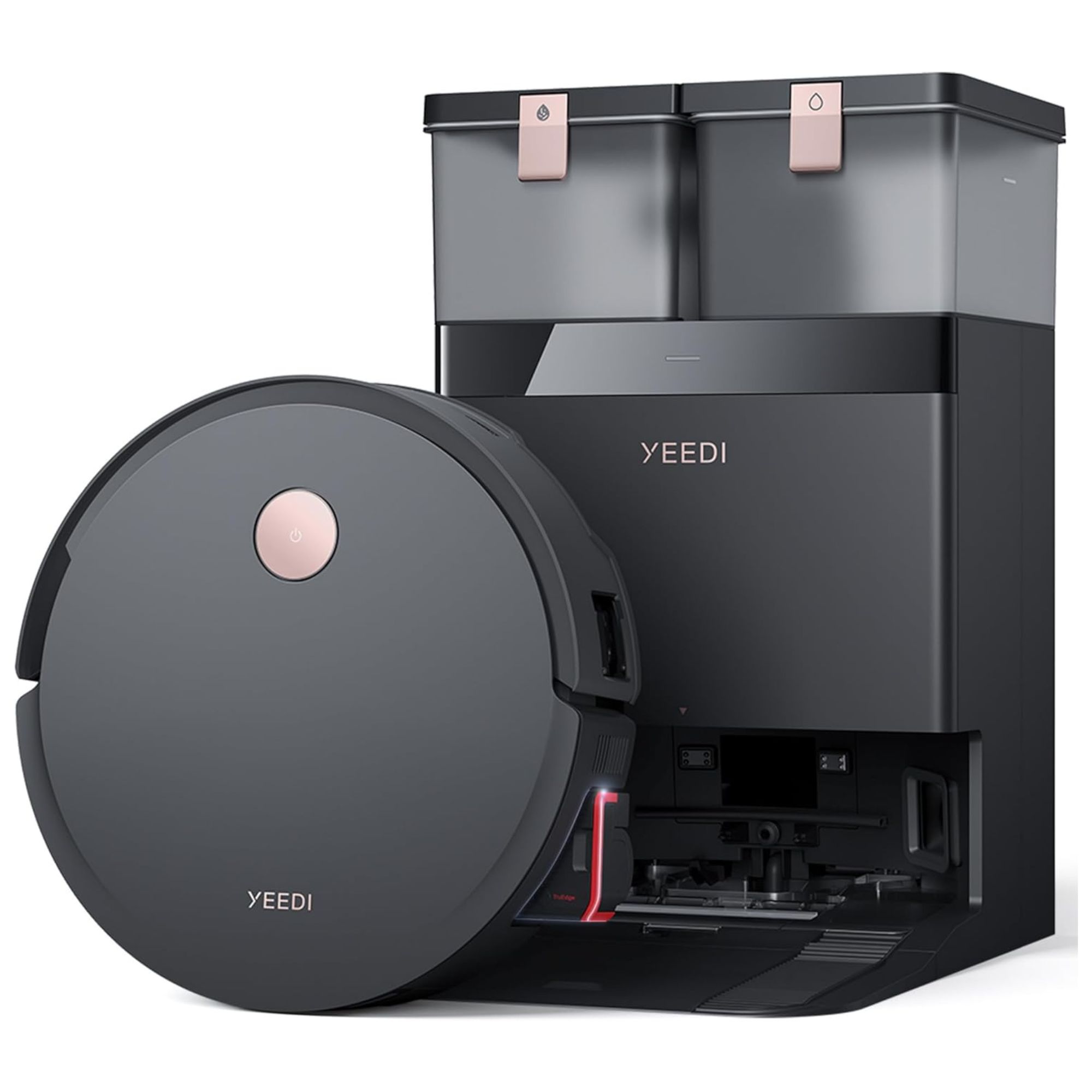
The best value robot vacuum cleaner
Since the release of the S20 Infinity, the Yeedi S14 Plus is often sold for less than half the original price. And with high 18,000Pa suction, deep mopping power, and the ability to clean right up to the edges and corners – it's one of the most hands-free robots you can buy, while costing $100s less than it should.
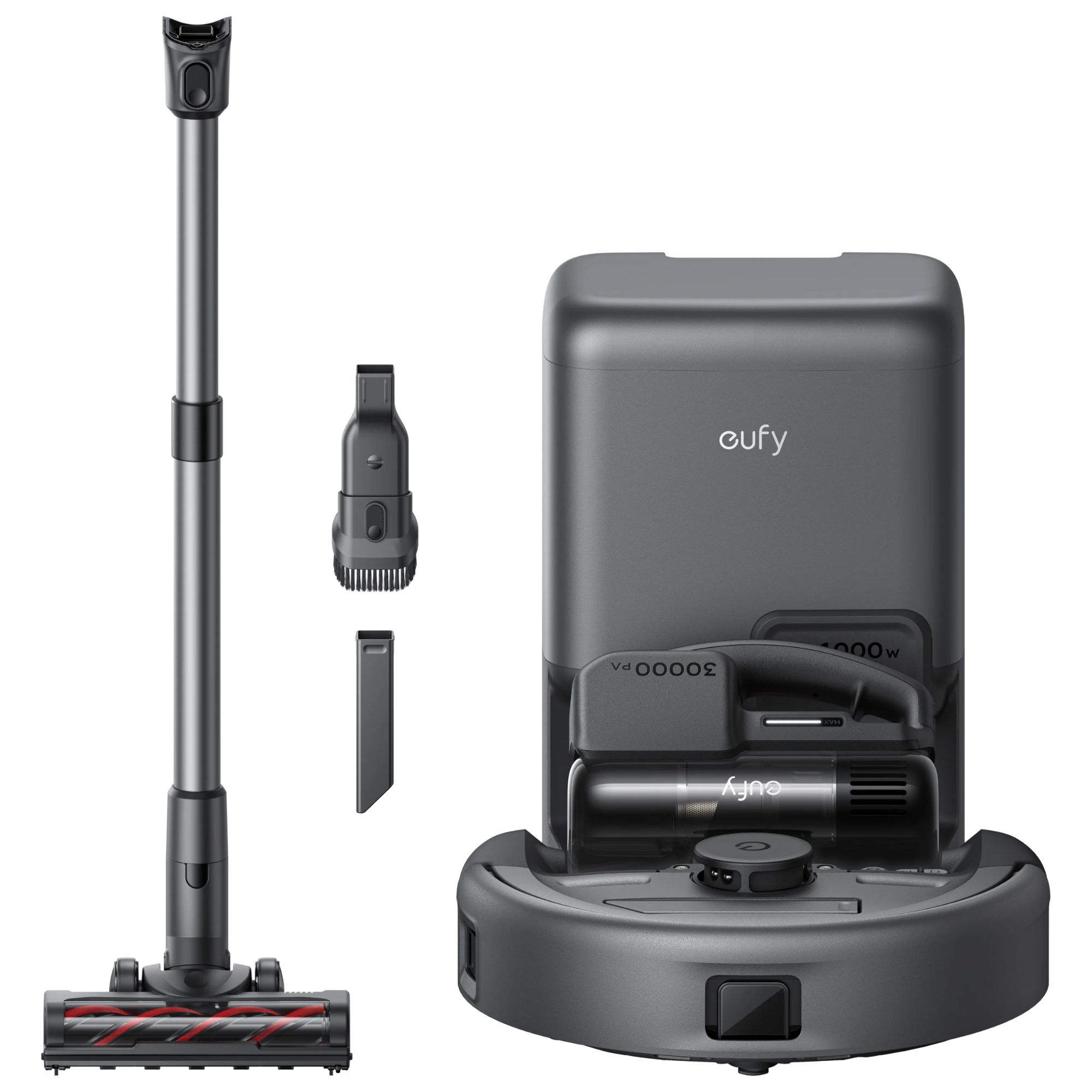
The best multi-function robot vacuum cleaner
The eufy 3-in-1 E20 comes with a detachable handheld vacuum, so that whenever the robot misses something, you can quickly and easily vacuum it up. It's the full package: While the robot cleans your floors, the stick and handheld can tackle furniture and upholstery.

The best budget robot vacuum cleaner
Now that it's a few years old, the eufy X10 Pro Omni is usually sold for around $400-$500, while outperforming every other budget robot we've tested thanks to consistently strong vacuuming and mopping.
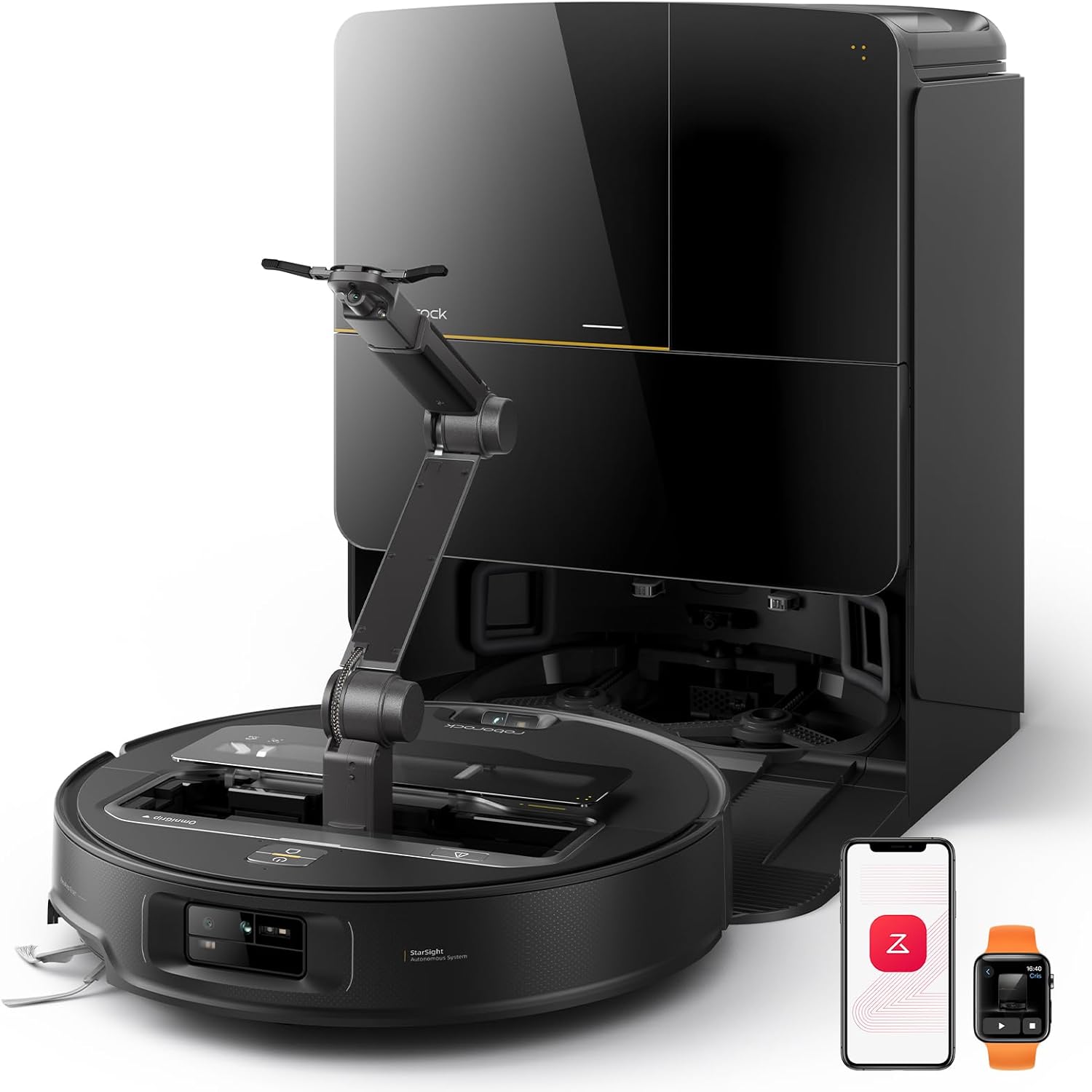
The best premium robot vacuum that tidies up for you
With an AI-powered mechanical arm that can pick up objects, then either tidy them or throw them away, the Saros Z70 goes beyond what other robot vacuums can do. It also has the strongest suction out of every robot we've tested.
Buying Considerations for Robot Vacuum Cleaners
Types of Robot Vacuum
Robot vacuums can range anywhere from as low as $150 to $1,500+ and within that range are plenty of different types to choose from.
Budget vs premium: Budget robot vacuums can seem like a great way to save $100s, but in reality, these low-cost robots don't have the hardware to deep clean your home. The suction is often weak, the brushroll tangles with hair, and you'll spend so much time cleaning up after it that you'll wonder why you ever bought it. If you live in a clean, quiet home with no pets and exclusively hard floors, a budget robot vacuum might be enough.
But otherwise, it's better to opt for a premium robot vacuum from brands such as iRobot, eufy, and Roborock that are better suited to actual cleaning. These models have stronger suction to pull dirt and hair out of carpets, advanced navigation and obstacle avoidance to reduce how often you're redirecting them, and more polished apps for easier use. Balance your maximum budget with a set of features that are a dealbreaker for you (more on these below).
Vacuuming and mopping: Some robot vacuums can also mop the floors for you. On test, we've found they work to varying success, but even the budget models will leave your floors looking and smelling fresher than usual. The more advanced models (such as the eufy Omni S1 Pro) will mop your floors almost as well as you would yourself, and can dramatically reduce how often you're having to clean your floors manually. This, in our view, is one of the major advantages of choosing a robot vacuum with a mop.
But if your home is mostly carpeted, the cheaper robots can sometimes wet rugs and carpets when passing from hard floors. If a mop is a dealbreaker, I'd recommend aiming to spend at least $600-900+ on a robot with a secure and fast-acting mop cover.
Self-emptying: Most robot vacuums come with (or at least have the option for) a self-cleaning station. These docks charge, empty, refill (if mopping), and self-clean the robot, taking significant chore time off your hands. They typically store dust, dirty water, and clean water for up to 60-75 days, depending on how often you use it. To get the true hands-off cleaning experience, I'd always recommend a self-emptying station, but you can save a little money if you don't mind emptying it after each run. Some robots, such as the iRobot Roomba j9+ Comb,o have stations that double up as stylish side tables, too.
Key Specs, Explained
Suction power: For robot vacuums, suction power is measured in Pa (Pascals). It's a key indicator of how well a robot vacuum can pull up dust, dirt, and hair from your floors. It can range from 2,000 to over 30,000 Pa, and on test, we've found that the best robots have around 8,000Pa or higher. If your home is carpeted, aim for 10,000Pa or higher to be able to pull dirt from within the carpet fibers.
But like with any of the best vacuum cleaners, brands don't have to list this information and often don't. iRobot is a culprit for this, whereas brands such as Dreame always list the suction power spec.
Also, suction power isn't the only factor determining how well a robot cleans. As we learned from testing eufy robot vacuums, some brushroll designs are better than others, so it's important to read reviews from those with hands-on experience.
Navigation type: Robot vacuums can use different technologies to navigate, build maps, and identify objects. In order of efficacy from best to worst, these are:
- LiDAR (Light Detection and Ranging): Laser beams are emitted from the robot to measure distances, creating a precise layout of a room. It works equally as well in bright and low-light conditions.
- SLAM (Simultaneous Localization and Mapping): Uses data from sensors and cameras to create comprehensive 3D maps. Performs best in well-lit spaces.
- Camera: By taking photos and scanning elements, camera-based robots can create maps to understand different rooms, but it depends on consistent lighting.
- Random: Only the budget options use random navigation. The robot doesn't move in a structured pattern, but moves around randomly and changing direction when it bumps into something. It isn't efficient, and will take much longer to cover every part of the floor.
The best navigation system is one that combines LiDAR, SLAM, and other sensor technologies to build comprehensive and real-time maps of your home. Naturally, the better sensors are more expensive, so weigh up how important it is to have a robot that can clean in the dark, avoid obstacles (especially pet waste, like the Roomba j7+ can), and build maps of different rooms.
App control: The smartphone app is what you'll be using to control your robot, so it's important to choose one that's easy to use and has the features you need. The best app will let you set schedules, rooms, and no-go zones, update your software, show where it has been cleaned, and provide maintenance information. The eufy and iRobot apps are our favorites thus far, but brands continue to update theirs, so I'd recommend looking to see what features are available (and what people say about them) when it's time to buy your robot.
Pet hair performance: To clean up after shedding pets, a robot vacuum will need a combination of high suction and a thorough brushroll to pull stubborn fur out of carpets and rugs. So far, the eufy Omni S1 Pro is the best we've tested for this (and cleans almost as well as a canister vacuum), and its rubber roller never once wrapped with hair.
Noise levels: We've found that robots' noise levels can range anywhere from 50 to 75 decibels, which is quieter than what you'd expect from one of the best cordless vacuums. The real noise maker is the self-emptying station, which, genuinely, can sometimes sound like a jet engine taking off, surpassing 80+ decibels. Brands will often list this info if you're looking for a quiet model, but I recommend reading reviews. We always test the noise levels ourselves to hear how loud they are in real-world conditions using apps such as Decibel X.
What You Can Get at Each Price Band
Robot vacuums have some of the highest prices of any home appliance you can buy, but they're discounted quite often. Always wait for a promotion, otherwise you'll be spending $100s more than you need to.
Here's what you can get at each price band:
- $100-200: Basic robot vacuum (often knock-off brands) with random or camera-based navigation, offering light cleans with mess left behind. The Roborock Q7 M5 [at Amazon] is the best we've tested at this price range.
- $250-450: Entry-level robot vacuums from trusted brands, offering app compatibility, simple features, and noticeable cleaning. The iRobot Roomba 105 Combo is a rare model at this price that has a mop function. Our best multi-functional robot, the eufy 3-in-1 E20, costs $599.99 at full price, but is often discounted to around half that.
- $500-950: Mid-range robot vacuums with effective (but not perfect) cleaning, mopping, self-emptying, and strong navigation. The eufy X10 Pro Omni and the Shark PowerDetect 2-in-1 are the best we've tested at this price. That being said, you can regularly find flagship robots like the Yeedi S14 Plus and the eufy Omni S1 Pro on offer around this price.
- $1,000+: The best robot vacuums, with advanced navigation, comprehensive app control, and the most thorough vacuuming and mopping. Expect to spend upwards of $1,400 for the best models, like the Roborock Saros Z70 and the Yeedi S20 Infinity, or opt for slightly older models like the Yeedi S14 Plus, eufy Omni S1 Pro, and iRobot Roomba j9+ Combo.
And don't forget – robot vacuums come with recurring costs in the form of filter replacements, roller replacements, and cleaning solutions. To avoid this, look for robots with lifetime filters, durable rollers and mops that only use fresh water, but really, models with recurring costs tend to come with better performance.
The Best Robot Vacuum Cleaners
The Best Robot Vacuum Cleaner



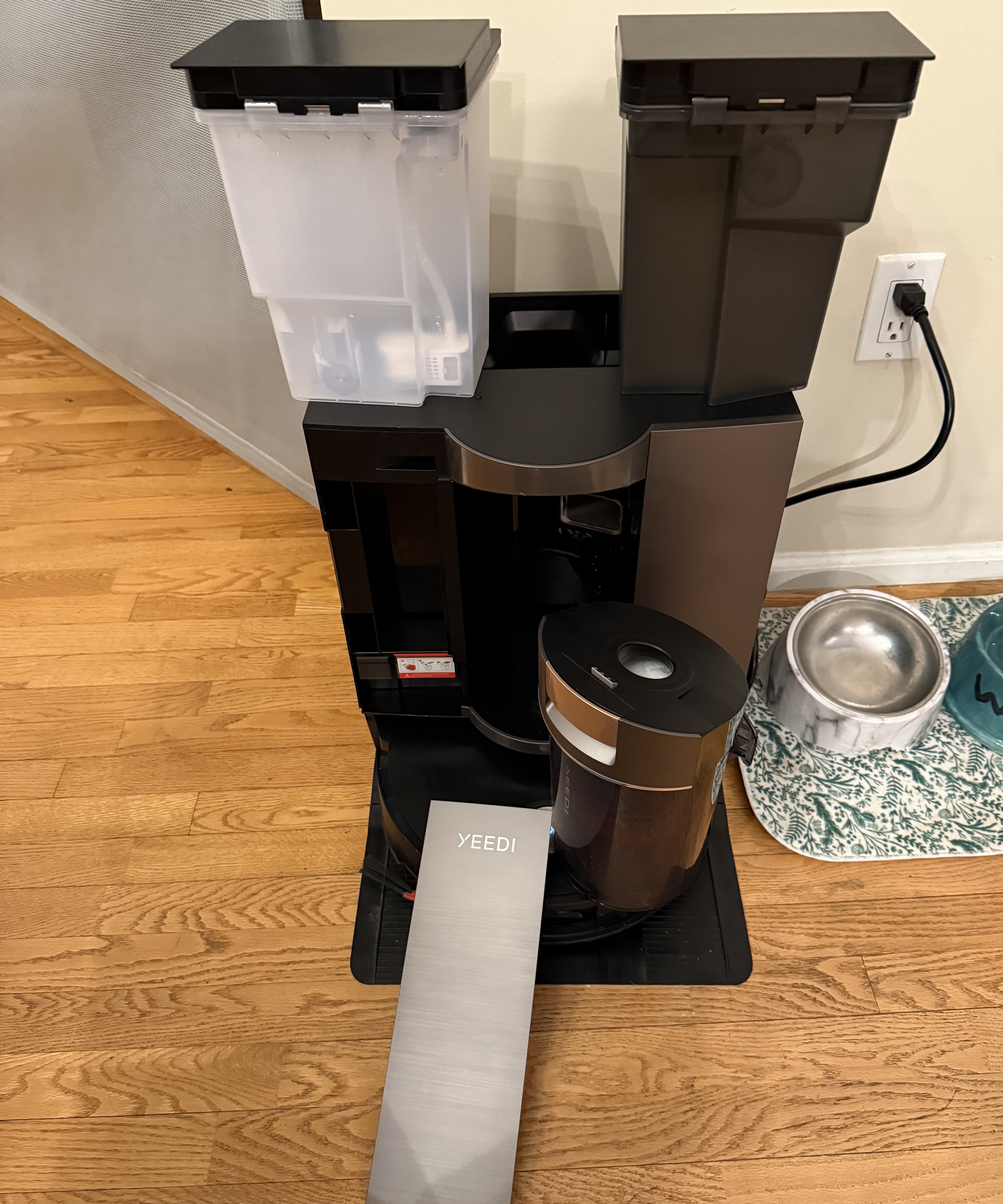
Specifications
Reasons to buy
Reasons to avoid
The Yeedi S20 Infinity delivers the deepest clean out of the 24 robot vacuums we've tested at Homes & Gardens. It boasts 19,500Pa suction and a self-cleaning mop roller that performed brilliantly on test.
Yeedi's previous flagship robot, the S14 Plus, was awarded the Indoor Cleaning Technology Innovation Gold Award at CES 2025 thanks to its robust ability to clean homes by itself. The Yeedi S20 Infinity is an upgrade in every way.
Its stronger suction is certainly noticeable when clearing meses of all kinds from carpets. Tester James Holland found that it was able to pick up flour, sugar, lentils and cereal – emulating debris of every size – from carpets without fuss.
We run quite extreme tests to see exactly what a robot is capable of, and while the Yeedi S20 Infinity can't replace your best vacuum cleaner just yet (no robot vacuum can), it will pick up a great deal of mess, leaving your home spotless in between deep cleans.
'Pet dander, little pieces of food, and random dust all get sucked up for a floor clean enough that I don’t mind walking across it barefoot,' James wrote in the review.
Thanks to a spinning side brush that collects dirt rather than flinging it around, and an anti-tangle roller for cleaning every floor type, the S20 Infinity packs a big punch for its small size.
The S20 Infinity is one of the few vacuums that uses actual cleaning solution to mop your floors (the eufy Omni S1 Pro also does). And as it uses a spinning brushroll rather than mop pads, it's able to pick up liquids and clear stains at the same time, applying downward pressure while it scrubs your floors.
Read more in our full Yeedi S20 Infinity review.
The Best Robot Vacuum for Pet Hair

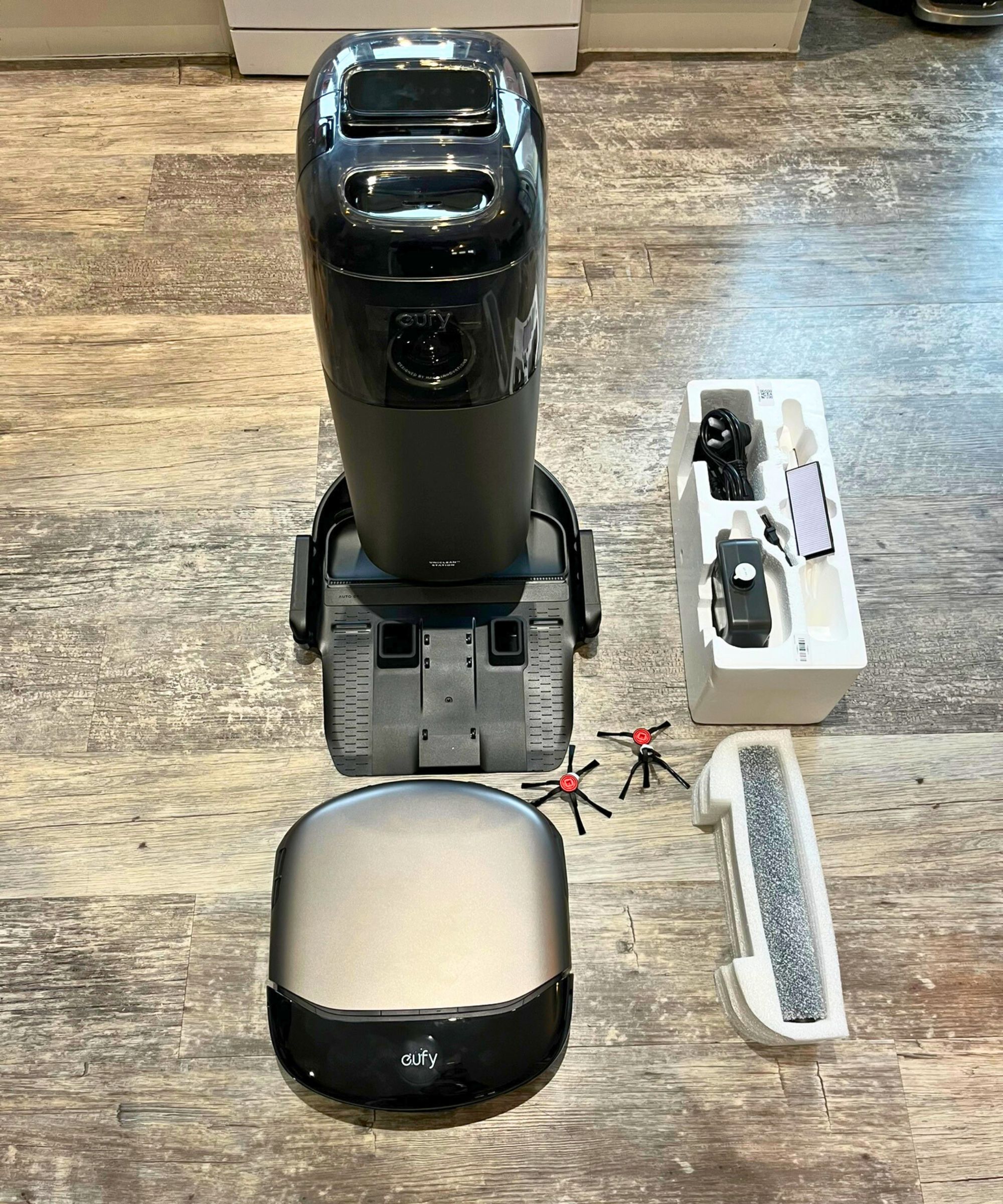
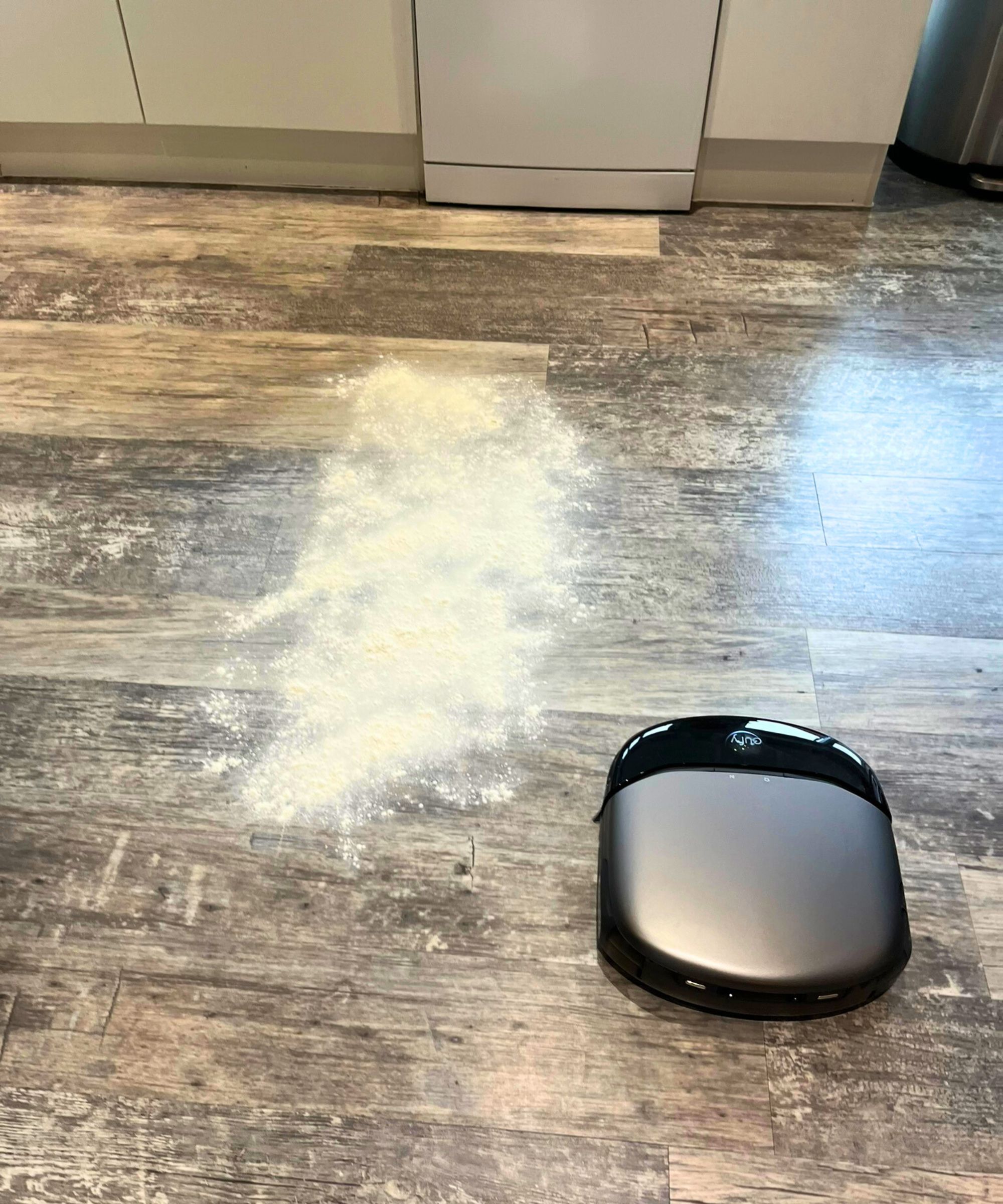
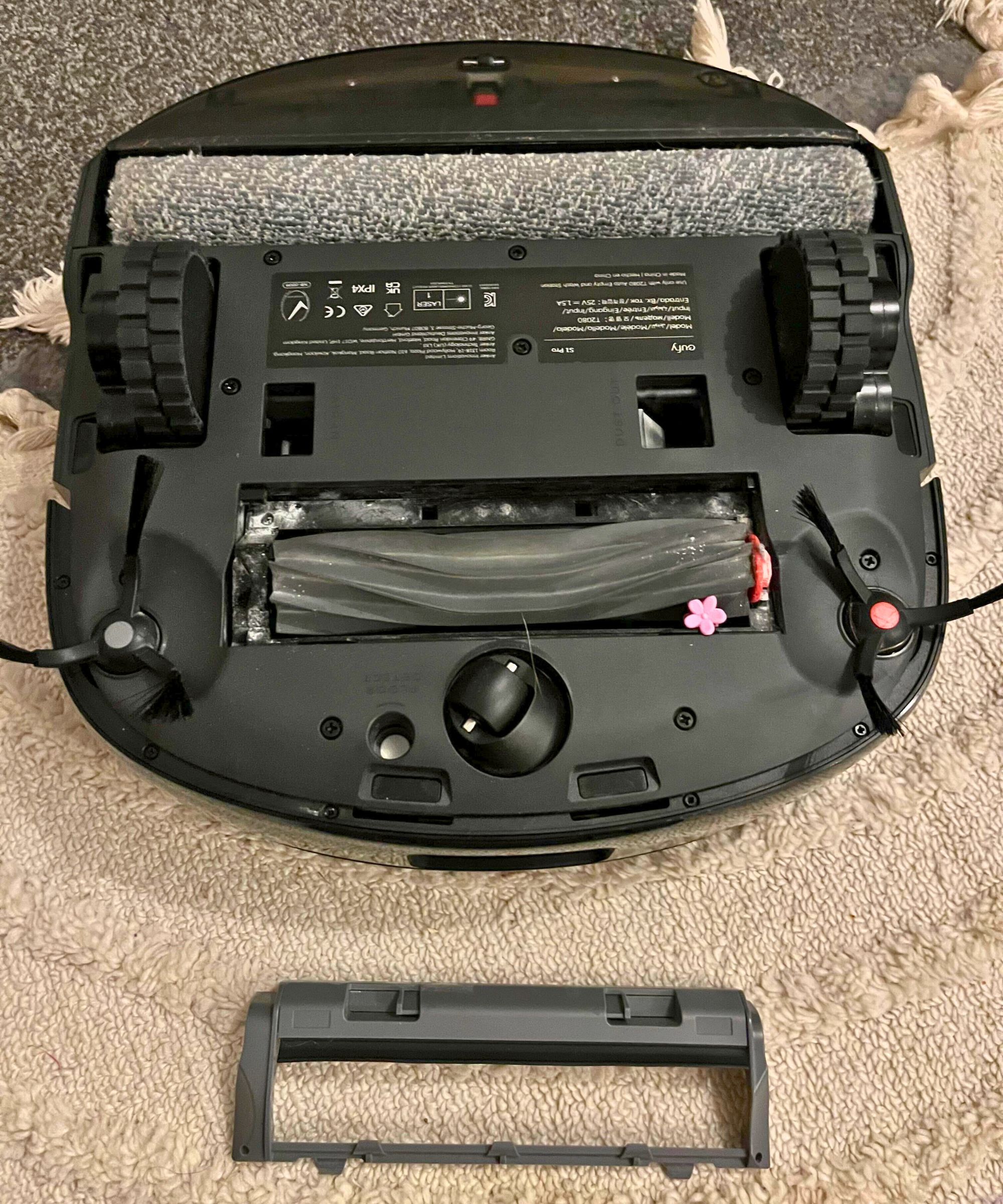
Specifications
Reasons to buy
Reasons to avoid
The eufy S1 Pro Omni was once our favorite robot vacuum, toppled by the Yeedi S20 Infinity's advanced debris pick-up and edge-to-edge mopping. But it's still an incredible cleaner, and still the most formidable we've tested on pet hair.
Punteha van Terheyden, tester and Head of Solved at Homes & Gardens, commented that it leaves 'nothing on hard floors when it comes to pet hair and dust and picks up much more than any canister vacuum I've owned when tested on carpet.'
Robot vacuums aren't typically the best vacuums for pet hair as their smaller motors aren't as able to pull fur from within the fibers, so for the S1 Pro Omni to capture more than a canister vacuum is not to be ignored.
After using the Omni S1 Pro for over a year, Punteha still commends its performance on pet hair, 'It's just as strong, nothing has changed. I've gone through several rounds of maintenance with it as well, and it's so easy.'
Plus, it still hasn't wrapped with hair. Manually removing hair and fur from a robot vacuum is a common problem and one that almost defeats the hands-free nature of an automated cleaner. Luckily, the Omni S1 Pro lives up to its anti-tangle claims.
The Yeedi S20 Infinity and S14 Plus may have stronger suction and an all-around more effective cleaning performance, but these two models aren't designed to be taken apart and maintained as easily as the eufy, which is important when dealing with fur.
The Omni S1 Pro also mops excellently, using a specialized cleaning solution to deep clean hard floors, and using targeted sensors to avoid wet mop pads touching any rugs or carpeting. 'It tackled sticky, sugary liquid spills with ease, and much like the tests available to view on the manufacturer’s website, blasted through coffee, milk and ketchup stains with zero issues, residue, or spread,' wrote Punteha.
With this model, however, it's important to make sure you're cleaning around the dock, as while the auto-empty is mostly great, it can spread a little bit of those contents around and slowly build up. It also occasionally struggles with thresholds like passing from rug to carpet, but you can easily set no-go zones via the app and leave those spots to your best vacuum cleaner.
Read more in our full eufy Omni S1 Pro review.
The Best Value Robot Vacuum Cleaner

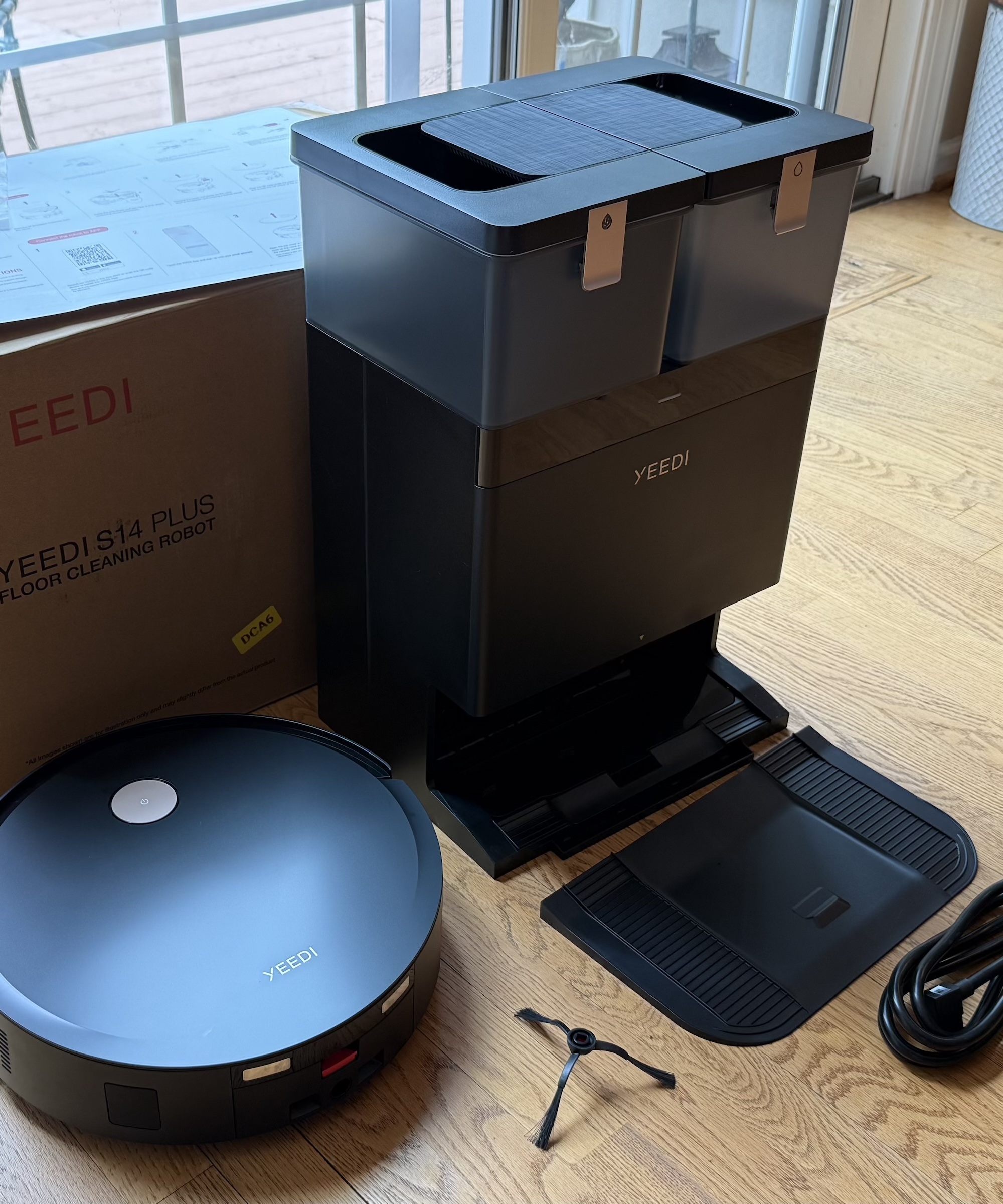

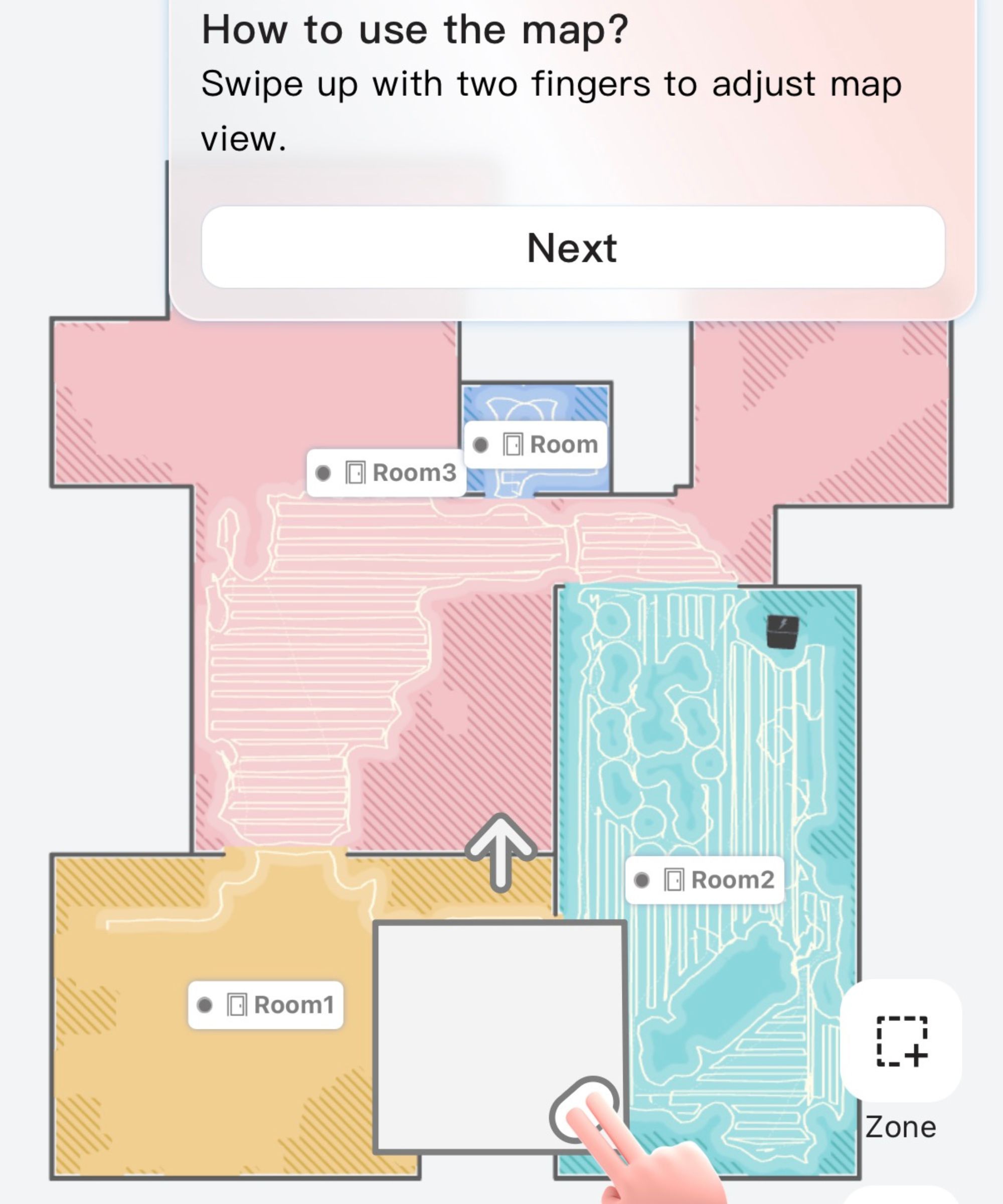
Specifications
Reasons to buy
Reasons to avoid
Funnily enough, the Yeedi S14 Plus used to be our number one pick, but it's since been usurped by the Yeedi S20 Infinity. And because of that, the S14 Plus can now typically be found for around $550-$750, when it used to cost $1,399.99.
Balancing price and high performance, this is the best choice if you want your money to go the furthest.
'The Yeedi S14 Plus does a stellar job sucking up any debris, from cut grass tracked in by dogs (or me) and hair, to dust and fallen food particles,' wrote tester James Holland in our review. This is owed to the S14 Plus' massive 18,000Pa suction, one of the highest we've ever tested (beaten only by the expensive Roborock Saros Z70's 22,000Pa).
It also does a great job at getting to edges and corners thanks to its side brush, and an extendable mop pad, which is a rare feature found in robot vacuums.
The mop is thorough and (mostly) painless. 'The Yeedi S14 Plus delivers an even layer of water, leaving no other spill behind, that dries quickly, making it ideal if you have floors that are susceptible to water damage,' wrote tester James.
Its only struggles when mopping the floors were during our high-volume tests for mustard and ketchup, where sauce became caught in the wheels, but this shouldn't pose an issue unless you're tackling big spills (generally, you should do this yourself before the robot gets to them).
The cleaning station empties, charges, cleans, and dries the robot between uses. It has clear tanks for clean and dirty water, so it's easy to see when they need emptying or refilling, and it also dries the mop pads to avoid smells and bacteria from festering.
The app is super straightforward, and on there you can set no-go zones, name rooms, and tell the robot to clean a specific area if needed. Its obstacle avoidance is exceptional, avoiding most objects in its path while emitting a subtle laser light to identify surrounding objects.
Considering it's almost always on offer for under $700, the Yeedi S14 Plus shouldn't clean this well. It may struggle with large amounts of debris, but almost every robot does, and in the day-to-day it faces no issues keeping floors spotless.
Read more in our full Yeedi S14 Plus review.
The Best Multi-Function Robot Vacuum

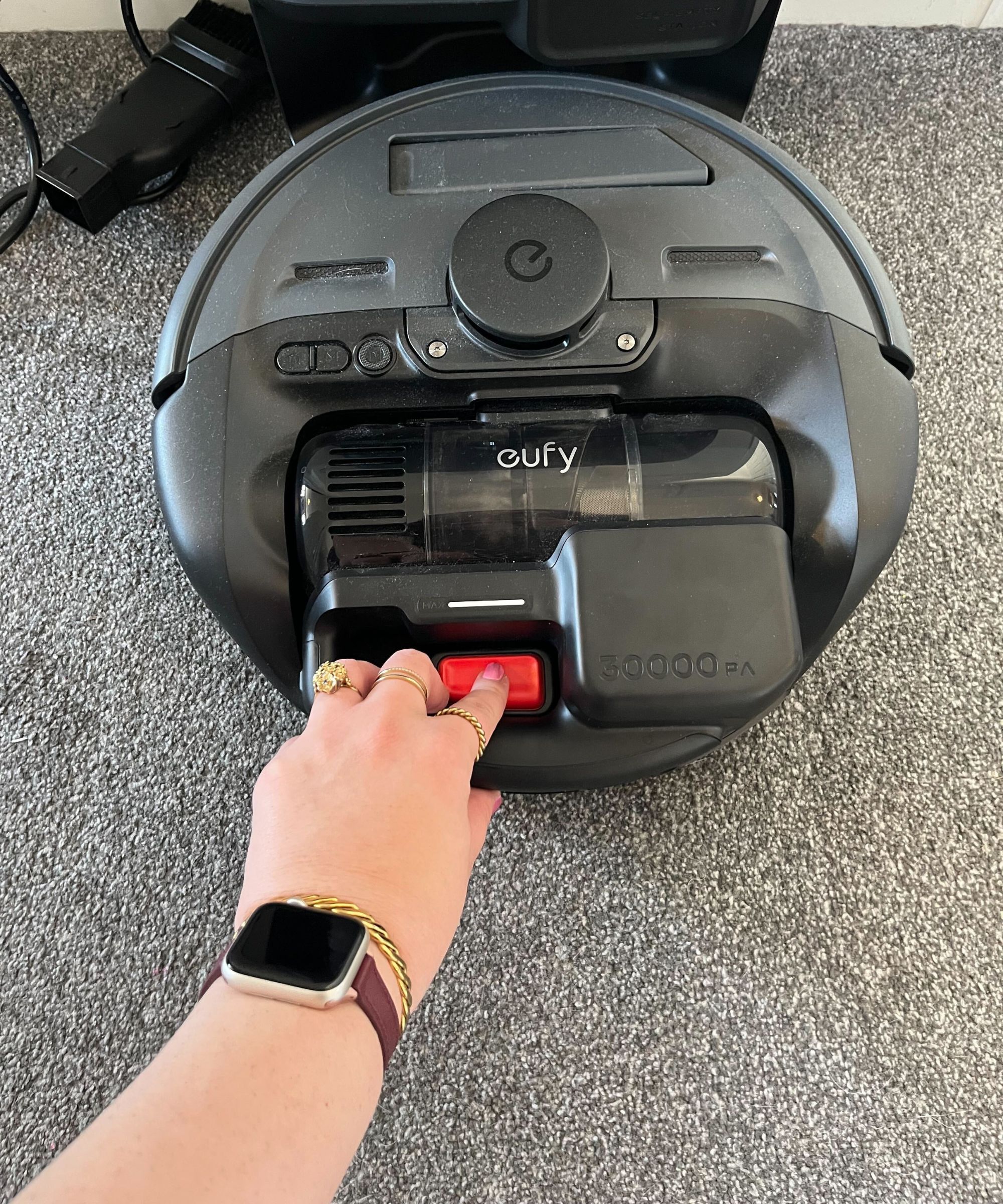
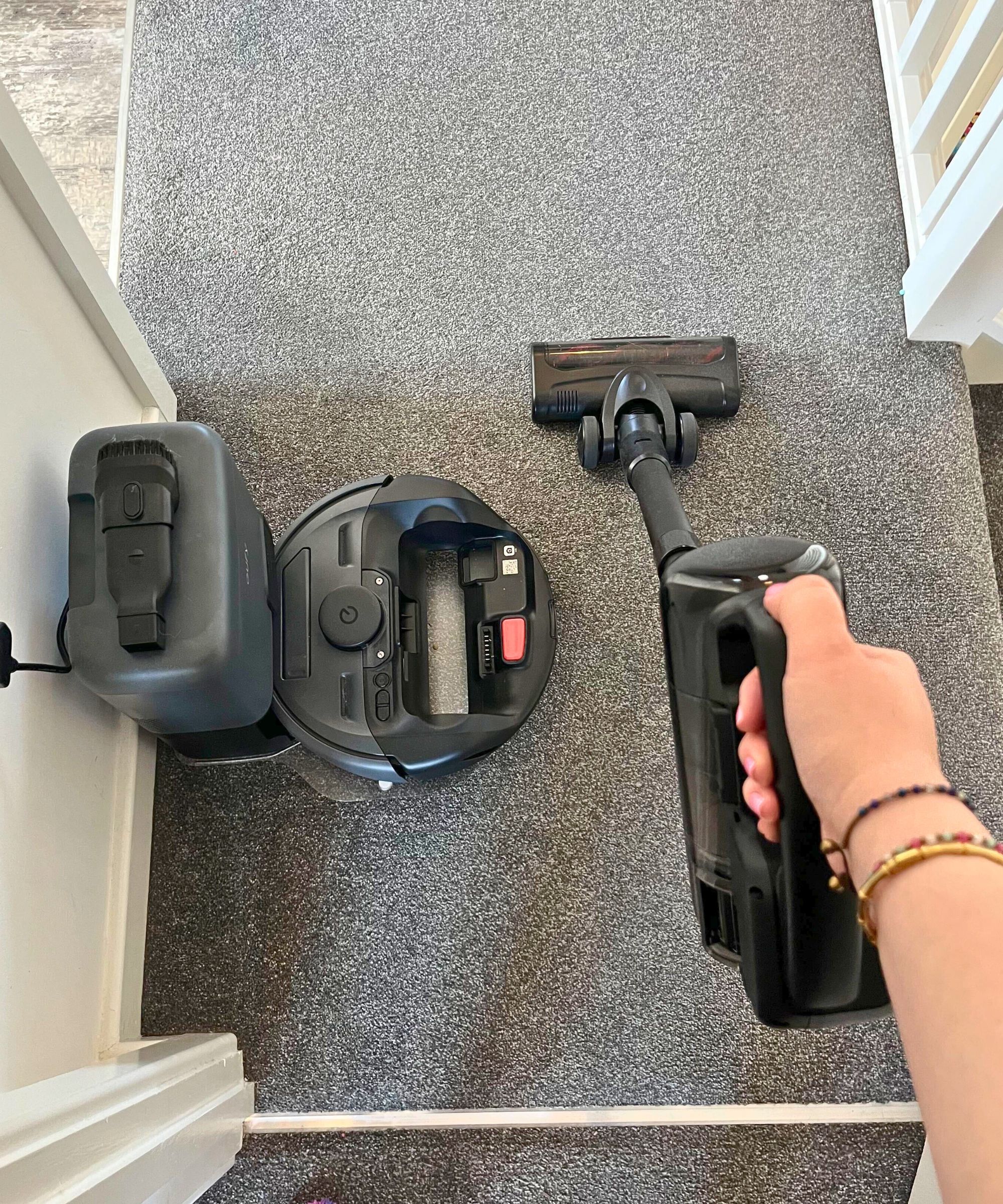
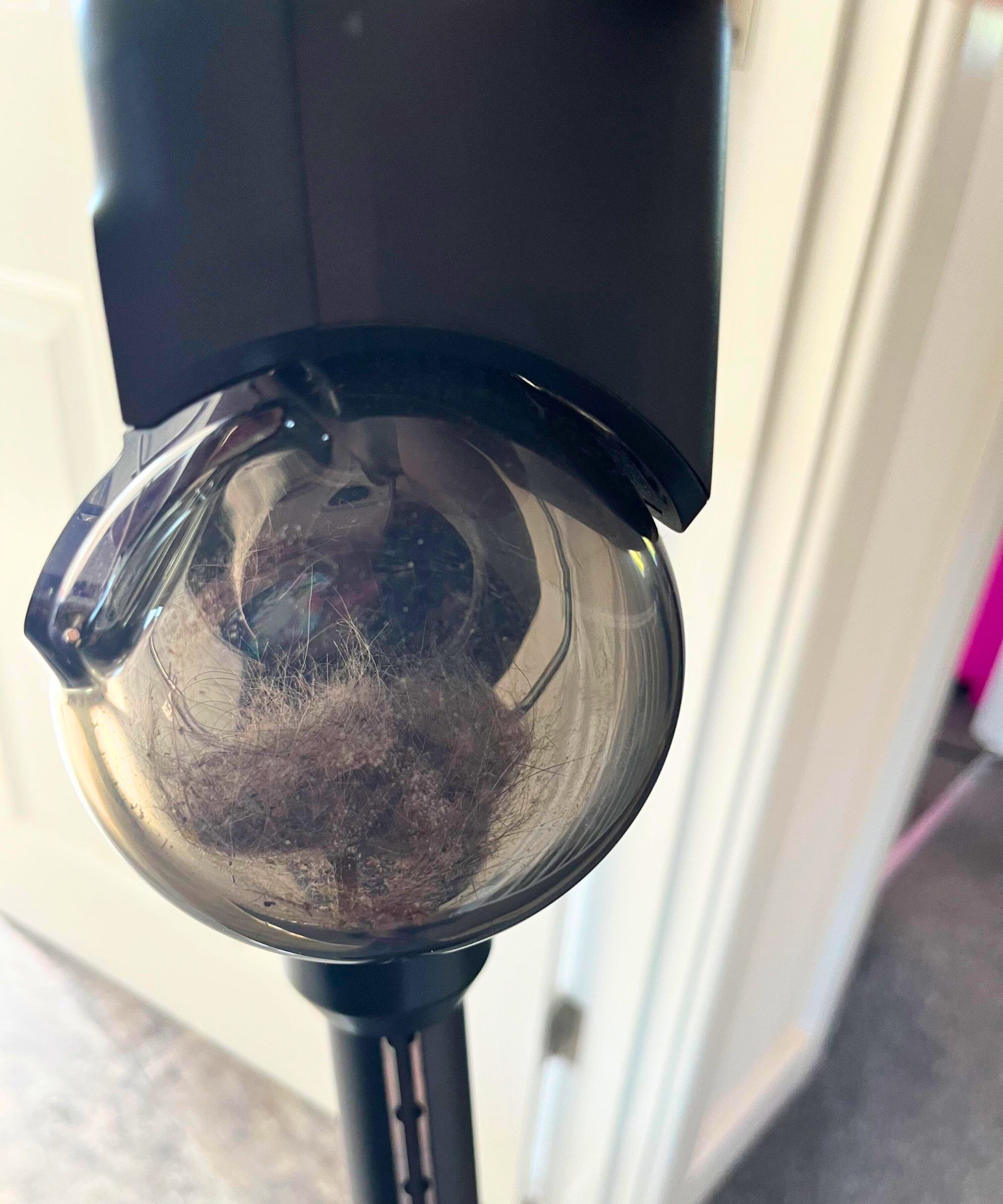
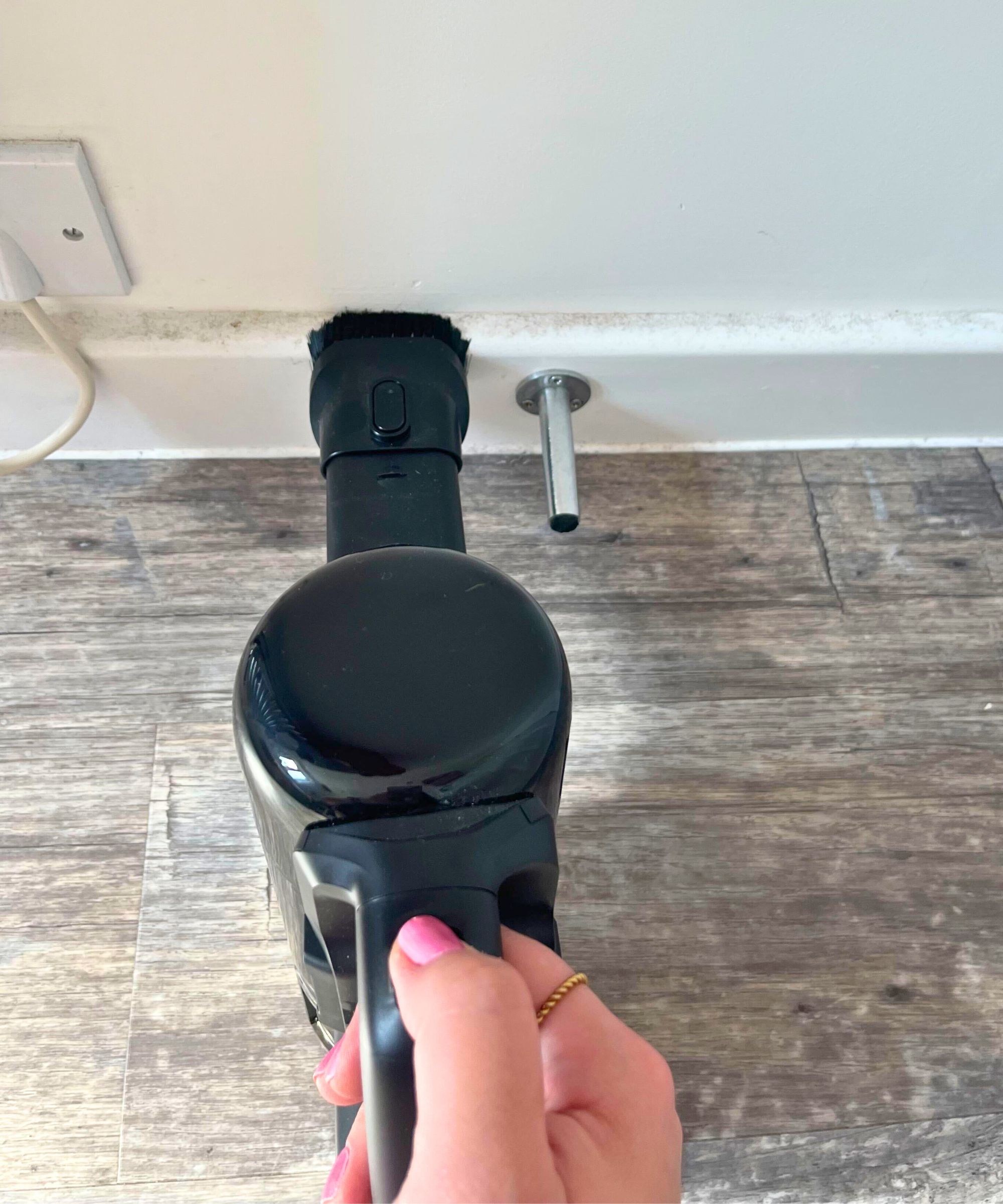
Specifications
Reasons to buy
Reasons to avoid
The eufy 3-in-1 E20 resolves a common issue found across almost every robot vacuum: sometimes, mess gets left behind. Robot vacuums are still nowhere near as powerful as, say, the best upright vacuums, and it's to be expected that they occasionally won't pick up everything.
eufy's answer is to stick a small handheld vacuum in the robot's body, so that you can quickly pull it out and vacuum manually. Like the best cordless vacuums, all you have to do is attach the wand and floorhead, and you have a full-sized vacuum ready to go.
The existence of an additional vacuum might give the impression of a weak robot, and in some instances, the E20 isn't as powerful as others in this guide, like the S1 Pro Omni, but it means you can count on it for just about any mess.
'During testing this combo in my home for two months, I found it tackled carpets, hard floors, sofas, upholstery, and everything in between with ease,' wrote tester Punteha van Terheyden, and the addition of the handheld vacuum meant that nothing was getting missed.
'The cordless and robot both moved easily between floor types, and the latter did not get bamboozled by oddly-shaped deep-pile rug,' Punteha wrote, showing off the E20's credentials as one of the best multi-surface vacuums. It's also more affordable than separately buying two vacuums to use together.
It sadly doesn't have a mopping function, but instead it costs $100s less than most of the robots in this guide. And for that small price, you're getting the full vacuuming package, with the handheld/cordless vacuum picking up all the tasks the robot can't do.
Read more in our full eufy 3-in-1 E20 review.
The Best Budget Robot Vacuum Cleaner
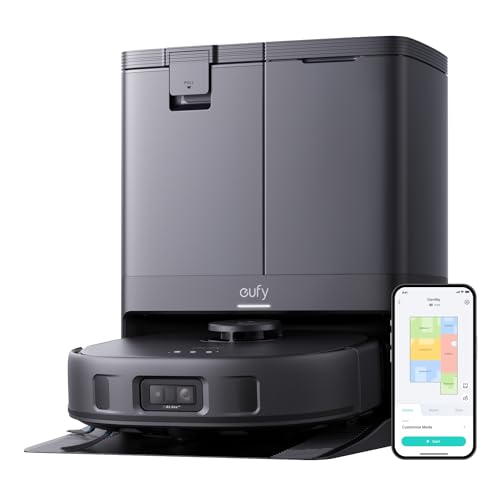

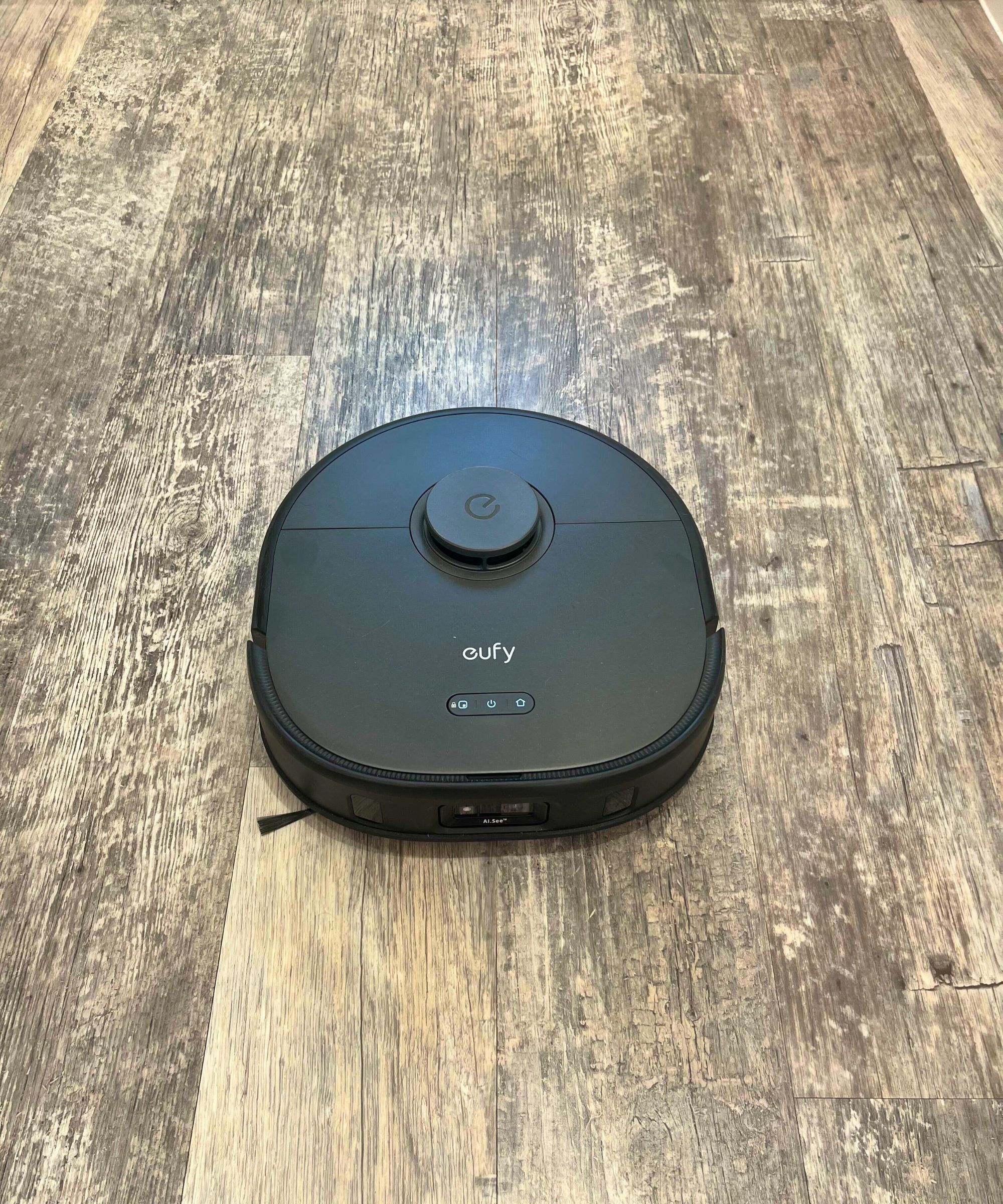

Specifications
Reasons to buy
Reasons to avoid
The X10 Pro Omni is the predecessor to the eufy S1 Pro Omni, and retails for around half the price. Robot vacuum tester Punteha certainly noticed the difference between the two models, especially on carpet, where the X10 Pro Omni only achieved a solid clean when in turbo mode.
'When I tested this robot vacuum on Turbo suction mode and Deep Clean with zero hair on the rubber brush roll, there was an enormous leap in performance, leaving no loose debris on the carpet,' she wrote in her review. In standard mode, the cleaning 'left a lot to be desired' as plenty of small and large debris was left behind after a complete run of the floor.
'Where this robot vacuum excels in my view is hard floors. It picked up absolutely everything in its path,' she added, so this could be one of the best vacuums for hard floors if you're looking to take some effort off your hands.
Another noticeable difference between the X10 Pro Omni and the S1 Pro Omni is in the obstacle avoidance. 'Whilst the object collision technology was mostly great, avoiding people, pets, doors, and stairs, it is a little bumpier by nature,' Punteha commented during testing. It also bumped into baseboards often and got so confused by the legs of a wooden table that it was unable to enter the bathroom next to it.
The mopping function works well, removing all tested liquids from the floors without a sticky residue or visual trace. It doesn't, however, utilize any cleaning solution, so while the floors can appear clean, you'll still need to mop the floors or use anti-bacterial wipes to remove the last of any mess.
Read more in our full eufy X10 Pro Omni review.
The Best Premium Robot Vacuum Cleaner

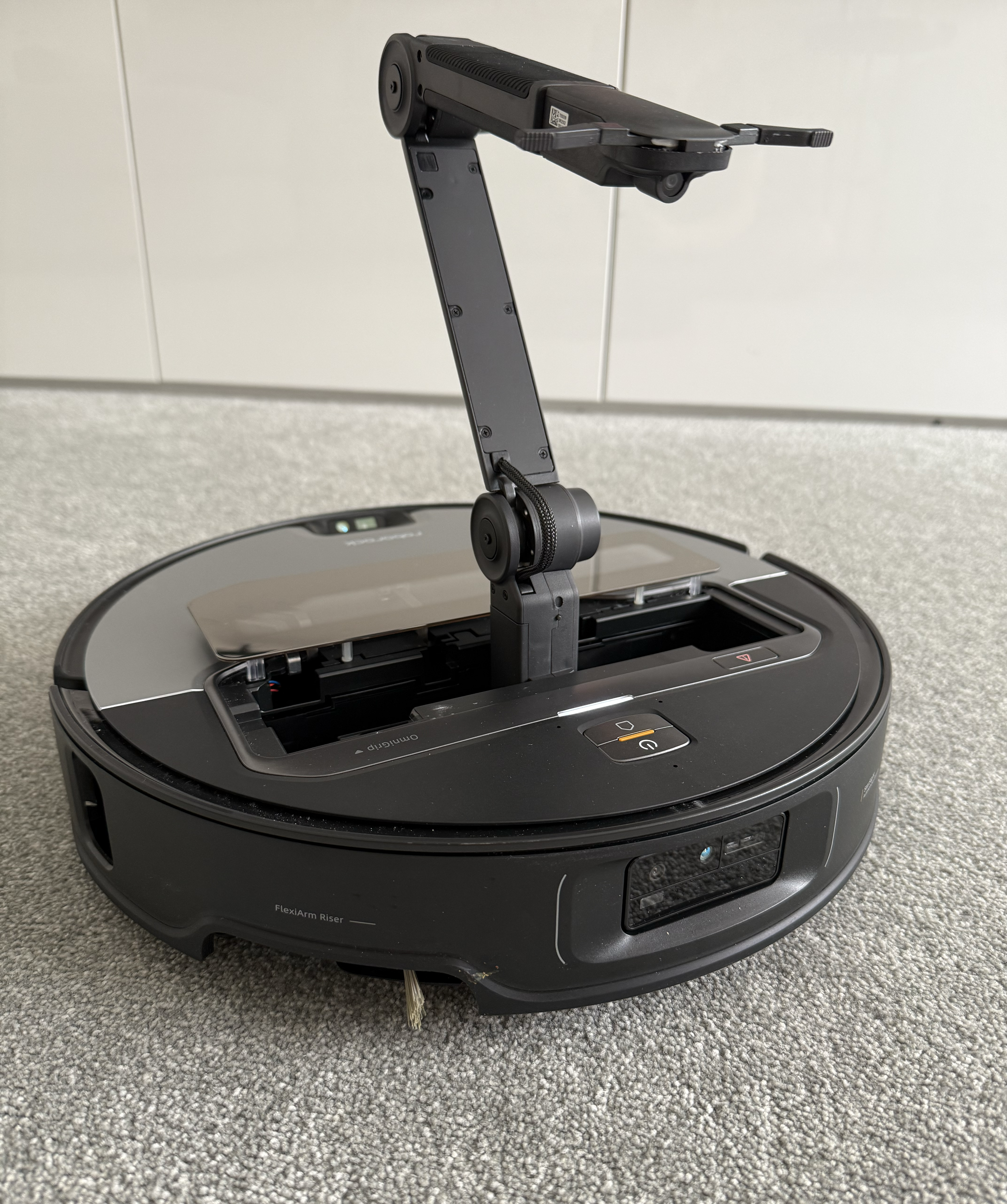
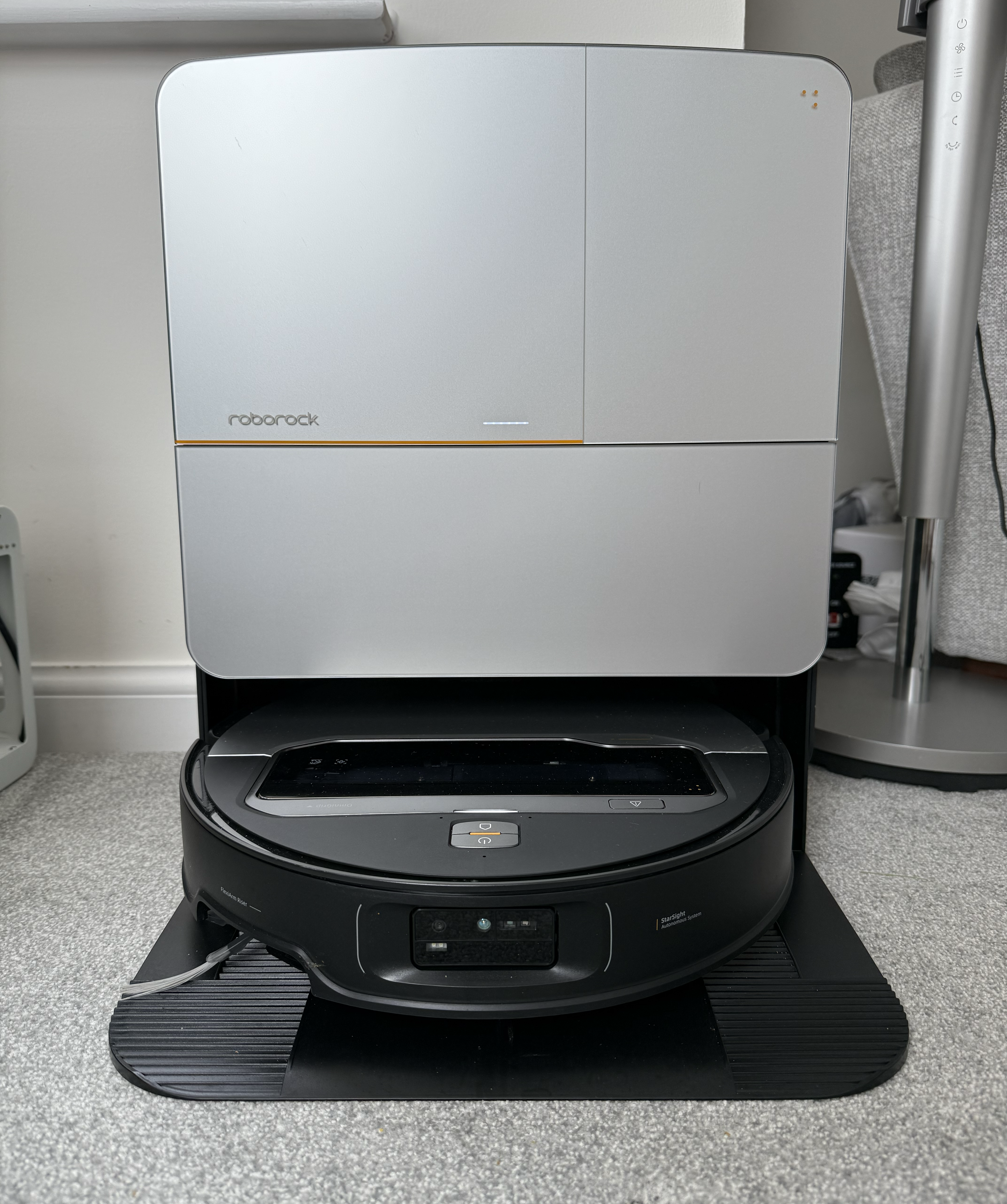
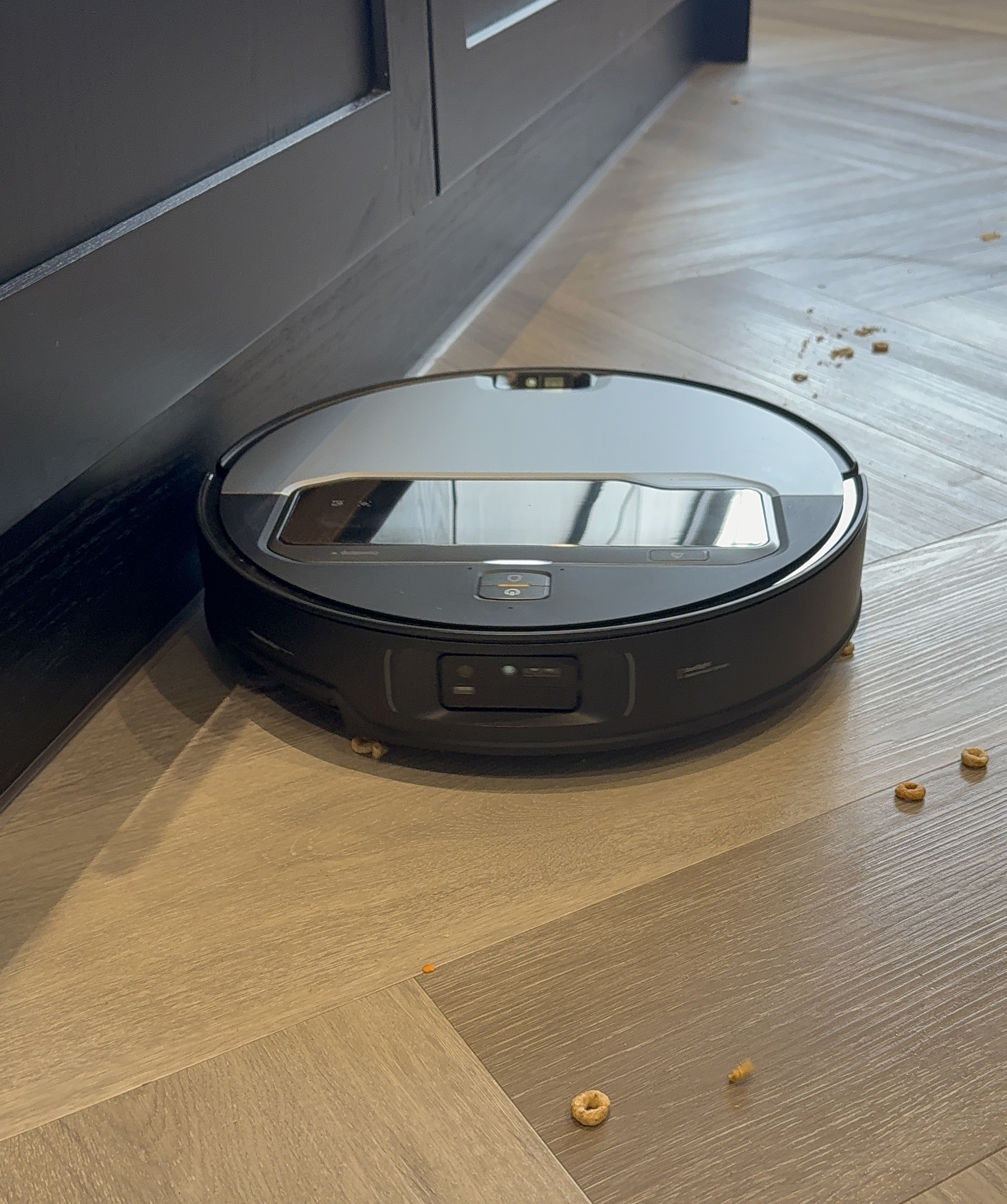
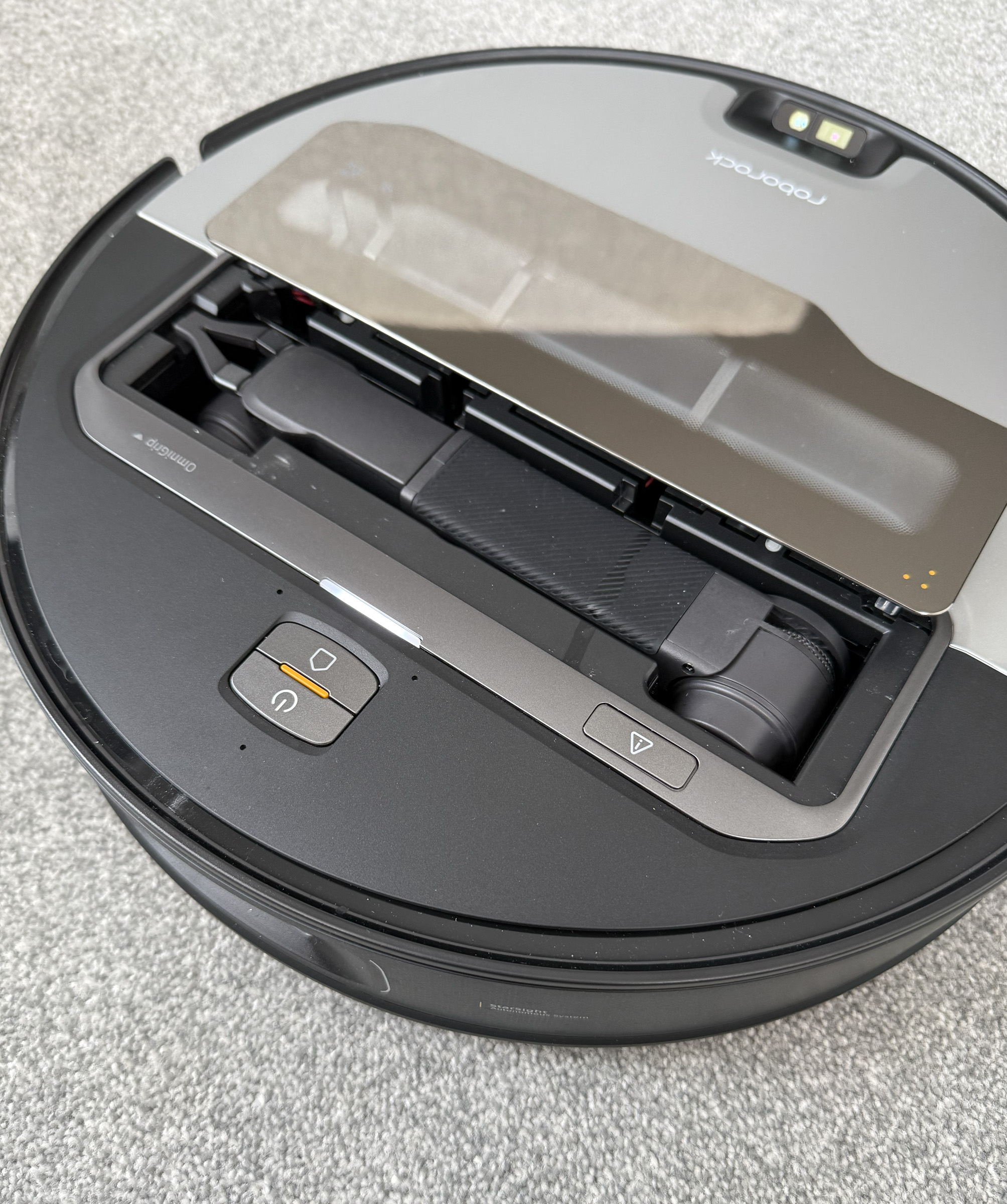
Specifications
Reasons to buy
Reasons to avoid
The Roborock Saros Z70 introduces a world-first: A mechanical arm that can pick up objects. It doesn't just clean the floors, it actually tidies up for you, as you can set locations such as the trashcan, laundry basket, or shoe rack.
Using AI object recognition, it's able to identify 108 objects, and you can train it to recognize 50 additional custom objects. So, whether it's tissues, laundry, shoes, or toys, the Saros Z70 solves one of the common pet peeves with robots, which is having to continually clear the floor for it to work.
But it isn't just the futuristic arm that makes the Saros Z70 so expensive. It also has the highest suction of any robot we've tested, 22,00Pa to be exact. For comparison, the Yeedi S14 Plus has 18,000Pa, and the eufy Omni S1 Pro has 8,000Pa – and they're our top two picks.
'The Z70 genuinely slashed my manual vacuuming by about 70%. I could leave the robot to run and come back to visibly cleaner floors, especially in the kitchen and hallway,' wrote tester Victoria Woollaston.
It did fall victim to hair wrap, however, so perhaps look elsewhere if you're hunting for the best vacuum for pet hair.
Its mopping ability is strong, too. 'In my kitchen, it handled dried coffee splashes and dusty footprints in one pass. In my hallway, it left a uniform shine with no visible streaking. I absolutely recommend it for day-to-day cleaning and stain removal,' Victoria Woollaston shared.
The floor dries in about five minutes, and it's also quieter than many others we've tested at around 50-60 decibels. And to help justify the high cost, Roborock introduced remote viewing features, so you can control the Saros Z70's camera and arm manually to make it a more interactive, fun experience.
Read more in our full Roborock Saros Z70 review.
More of the Best Robot Vacuums
These robots are in our top six as they excel at cleaning, their apps and smart features are genuinely useful and user-friendly, and they reduce how often you have to clean yourself.
But if they're not quite what you're after, here are a few more robots we love from our tests:
- The Shark PowerDetect 2-in-1 is a strong all-rounder, offering decent vacuuming, mopping and self-cleaning, even if it doesn't perform as well as the top three in this guide. You can sometimes find it discounted to as low as $399.99 at SharkNinja.
- The Eureka J15 Pro Ultra is a solid, hands-off robot with excellent mapping and obstacle avoidance, and it's great at general, day-to-day cleaning. It costs $999.99 at full price at Eureka and Amazon.
- The Dyson 360 Vis Nav has impressive suction utilizing one of the most powerful motors in the robot vacuum market, but it falls short on its poor obstacle avoidance and lack of self-cleaning. Find it at Dyson for $999.99.
- The eufy X8 Pro has now been discontinued, but if you're able to find it second-hand, you'll be able to enjoy a super-low price on a robot that's still a strong cleaner years after its release.
Pros and Cons of Robot Vacuums
Robot vacuums might sound like a miraculous cure-all for floor cleaning at home, but there are certain pros and cons you should consider before making the investment.
Pros
Robot vacuums clean for you, reducing time spent on chores. You can set a robot vacuum to clean your floors as regularly as you want, up to multiple times a day, leaving you with consistently spotless floors without the task of manually doing so. A robot vacuum is a guaranteed way to clean your home when you're too busy.
Robot vacuums clean pet hair and capture allergens. For any pet owners or allergy sufferers, having a robot do a regular clean will vacuum pet hair and remove common household allergens from your space, resulting in less build-up, fewer allergic reactions, and a nicer-smelling home.
Robot vacuums excel on hard floors. Many modern homes in the US and worldwide have predominantly hard floors, and robot vacuums (with their limited motors compared to full-sized vacuums) can offer ample suction to clean these easy surfaces. Many models can sense whether they're vacuuming a hard floor or carpet, too, and can adjust the suction when needed.
Cons
Robot vacuums won't replace your regular vacuum (yet). While robot vacuums can be a savior for spotless floors and less time spent cleaning, they're not sophisticated enough to replace your normal vacuum. You'll still need to do occasional deep cleans, and a robot isn't yet able to clean stairs or furniture (although Dreame's new robot is a step in that direction, and the eufy 3-in-1 E20 comes with a handheld cleaner for more varied tasks).
Robot vacuums aren't as quiet as you might think. They may be small, but robot vacuums can still be a major distraction if you're watching TV or relaxing in the evening. This is especially true when the robot self-empties at the dock – you'll be surprised by just how loud it can be.
Only expensive robots can clean the carpet. This is the same for the cordless vacuums, as these machines are restricted by their reliance on a battery. To vacuum carpet effectively, you're looking at spending $1,200+ on a premium model.
How We Test Robot Vacuums
We put a lot of thought into how we test robot vacuums. The testing process is similar to how we test vacuums, with a few key differences.
We test robot vacuums in our own homes to assess their ability to clean real-world messes, navigate obstacles such as cables, toys and pet waste, and build maps of real homes. We test them in homes with shedding pets and multiple floor types (carpet, linoleum, hardwood) to build a picture of what the robot is capable of.
We also run specific tests on substances to evaluate the robot's ability to clean fine debris, large debris, stains and spills. These standardized tests have been refined over the years, previously, they have included rice, flour, coffee grounds and more, but these are the tests we've discovered work best:
- A quarter cup of sugar, on hard floors and carpet
- A quarter cup of lentils, on hard floors and carpet
- A quarter cup of cereal, on hard floors and carpet
- A quarter cup of ketchup (if the robot can mop)
- A quarter cup of mustard (if the robot can mop)
These tests show the robot's ability to clean substances of varying sizes and properties. Alongside these tests, we also assess the robot's general cleaning abilities, noticing what it picks up and what it doesn't, how the floor feels afterwards, and how often we have to clean up after it.
We also test the robot's navigation and obstacle avoidance, weigh up app features compared to others, and determine how easy it is to clean the robot vacuum itself by taking it apart.
Essentially, we assess every aspect of a robot vacuum that someone might consider when buying. We do this over one to two weeks.
FAQs
How Long Do Robot Vacuums Last?
With proper care and regular maintenance, the average robot vacuum lasts around four to six years. The lifespan depends on how often you vacuum, the type of flooring in your home, and how often you keep up with cleaning the robot vacuum and its filters, brushes, and sensors.
Models that are neglected or overloaded tend to wear out faster, while those treated like a well-used appliance, rather than a set-it-and-forget-it gadget, can easily last longer.
Do Robot Vacuums Work on Thick Carpet?
Generally, no, unless you're willing to part with upwards of $1,000. Budget and mid-range robot vacuums simply aren't powerful enough to suck debris and hair from within carpet fibers.
This is what the premium price tags reflect. More powerful motors and high-efficacy brushrolls are expensive to produce, but provide real-world results, such as being able to vacuum thick carpets. So far, the Yeedi S20 Infinity [at Amazon] and the eufy Omni S1 Pro is the best we've tested for carpet cleaning.
Are Robot Vacuums Worth It for Pet Hair?
Robot vacuums excel in their ability to clean little and often. They're not as powerful as the cordless and upright models in our best vacuums for pet hair guide. Instead, they offer frequent maintenance of your floors, picking up pet hair that's likely to accumulate throughout the day.
This cleaning style makes robot vacuums a big help for anybody with pet allergies. I've spoken to dozens of consumers who have praised robot vacuums as the single most effective solution to managing pet hair and avoiding buildup, to keep your home clean when you have pets.
Removing pet hair daily will limit exposure to the allergens found in pet dander, significantly reducing symptoms compared to those who clean once a week. And with the rise of combination robot vacuums and mops, you can clean up after your pets more hygienically.
Do Robot Vacuums Map Your House?
Yes, but not always. Robot vacuums build detailed maps of your home to give you greater control over where you're cleaning, which rooms to focus on, and which areas to avoid. It also means that the robot will ensure every spot is covered.
Some robot vacuums use random navigation, meaning they don't build maps but simply move around until they reach a wall or obstacle, then continue in a new direction. If you don't want a robot to map your home, opt for one of these models, but be prepared for it to frequently miss areas.
Do Robot Vacuums Need Wi-Fi?
Most robot vacuums need Wi-Fi to make use of all the available features. Without Wi-Fi, the robot vacuum won't be able to map your home, update its software, or utilize any of the features on the app, such as schedules, no-go zones, and cleaning status updates.
To discover more from our vacuum tests, be sure to look over our guide of the best Dyson vacuums, best Miele vacuums, or the best Dyson alternatives to save money on excellent floorcare.
Design expertise in your inbox – from inspiring decorating ideas and beautiful celebrity homes to practical gardening advice and shopping round-ups.

Dan is the Home Tech Editor for Homes & Gardens, covering all things cleaning, sound, smart home, and air treatment across the Solved section.
Having worked for Future PLC since July 2023, Dan was previously the Features Editor for Top Ten Reviews and looked after the wide variety of home and outdoor content across the site, but their writing about homes, gardens, tech and products started back in 2021 on brands like BBC Science Focus, YourHomeStyle and Gardens Illustrated.
They have spent more than 400 hours testing and reviewing vacuums, soundbars and air purifiers for Homes & Gardens.
Dan has a BA in Philosophy and an MA in Magazine Journalism. Outside of work, you'll find them at gigs and art galleries, cycling somewhere scenic, or cooking up something good in the kitchen.
